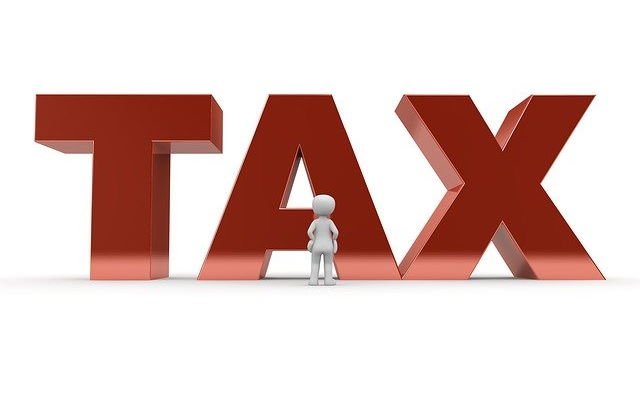Index Universal Life Insurance (IUL)
If you are risk-averse and would like to see your investment grow safely, you should look into the Index Universal Life Insurance’s advantages.
If you would like to learn how Indexed Universal Life Insurance works, watch the folowing video or continue reading this page.
Fill Up the Savings Snapshot Form on the right and we will create an IUL Illustration for you, based on your numbers.
People Tend To Forget The Good Years, But...

Do you remember the prosperous year of 2007? Not many people do. During that time, everyone was making significant gains in their retirement and investment accounts, envisioning an early retirement before turning 65.
At that time, obtaining a loan was incredibly easy, with banks practically competing to offer the best and most attractive terms. Loans were readily available to almost anyone. It felt like money was being given away.
However, ask anyone about 2008, and most will remember it. The market crash caught most people off guard, decimating their life savings. 401K accounts turned into 201Ks, and for some, even 101Ks. The despair of watching retirement funds disappear was palpable. Imagine the plight of those who were just a few years away from retirement. Their retirement plans were shattered, and they realized they would have to work well beyond their expected retirement age just to stay afloat.
What Could You Have Done To Protect Your Investment?

If you possessed a crystal ball that foretold the future, what actions would you have taken? Would you have withdrawn your money from the stock market, your IRAs, and 401Ks a few days before the crash, only to reinvest it when the market hit rock bottom in March 2009? Unfortunately, no one has that magical foresight. We can’t predict when the market will crash or determine the lowest point until after the fact, when economic signs start to emerge.
We have experienced the longest bull market in US history since 2009. However, can we foresee the next crash? No, we cannot. We lack a crystal ball. Can we predict the severity of the next crash? No, we cannot.
But can we take steps to protect ourselves from a major downturn?
What Do You Think Taxes Will Do In The Future?
Let’s shift gears and explore the other side of the coin. Do you believe taxes will increase in the future?
Although we lack a crystal ball, most financial experts tend to anticipate higher taxes. When your bills exceed your budget, how do you respond? You typically try to increase your income, either by finding a second job or a side hustle, to make ends meet.
How does our country pay its bills? Through tax collection, of course.

In the past 14 years alone, the US national debt has nearly tripled, reaching over $23 trillion. This debt continues to grow at an alarming pace, and it will eventually need to be repaid. The only means to accomplish this is by increasing tax rates or collecting the same rate from a larger number of people. Which direction do you believe the trend is heading?
Again, without a crystal ball, we cannot guarantee that tax rates will rise in the future. However, if they do, would you prefer to pay taxes on a potentially lower rate and smaller amount now or a much larger amount later with a potentially larger rate?
Would You Rather Pay Taxes on a Small Amount Now or a Very Large Amount Later?

Now can we look at the third… side of the coin. (A little financial humor.)
I know that some financial advisers are teaching you to defer your taxes but to better understand this concept, let’s embark on a little imaginary journey.
Imagine yourself as a farmer, heading to the local seed store to purchase corn seeds.
Your buddy, the store owner, comes to you and says: Hey buddy, you don’t owe me any money for the taxes right now but when you harvest, I will come to you and charge you tax on the money that you paid for the seeds plus taxes for the money you will make when you sell your whole harvest. Also, by the way, I will not guarantee that the tax rate will be the same as today.
How would you respond to your buddy? (Remember, we have to be civil.)
Have you ever pondered over the idea of paying taxes on the money you contribute to your retirement plan upfront, rather than deferring them to a later date when both your contributions and the growth of your account have accumulated and any withdrawal will be taxed? Then you will have to pay for both the contribution and the accumulated cash growth.
What Type Of Money Would You Rather Have In Retirement?
In retirement you will have 2 types of money:
- Taxable
- Tax Free
Which one would you rather have? I am pretty sure you answered TAX FREE !!! If not, I think we have to go back to the drawing board.
In the Taxable category there are 2 types of taxation:
- Capital Gain Tax
- Income Tax

You will pay Capital gain tax for investments in stocks, real estate, etc, and you will pay income tax on qualified plans that are tax-deferred like 401K, 403B, IRA, etc.
Tax Free Retirement

Let’s look into the tax-free retirement categories, where you have three options available:
- Municipal Bonds
- Roth IRA
- Permanent Life insurance – Indexed Universal Life insurance
1 – Municipal bonds have not provided a viable alternative in the past so I will not even talk about them. The return rate for municipal bonds didn’t keep up with inflation.
2 – Roth IRA: Roth IRAs can be a good option but entail more risk. Returns are tied to mutual funds or specific stocks, exposing your money to greater market volatility. When markets tank you don’t have protection like you do with an IUL. Moreover, there are income and contribution limits, as well as penalties for early withdrawals before the age of 59½. You can’t have an income higher than $124,000 as a single person or $196,000 as a married couple and you can’t contribute more than $6000 a year or $7000 a year if you are over 50 years of age.
Permanent Life Insurance - Index Universal Life Insurance
Now if we are talking about risk, let’s talk about the importance of managing investment risks and achieving a tax-free retirement. It’s no secret that most investments come with some level of risk. Many tax-deferred qualified plans are tied to mutual funds or stocks that can fluctuate in value. But have you ever wondered what would happen if the market were to crash just before your retirement?
Imagine having to continue working during your retirement years. How would that make you feel?
That’s where our third option comes in, offering you the best solution for a Tax-Free Retirement: Permanent Life Insurance, specifically Index Universal Life Insurance (IUL).

When utilized responsibly and with discipline, an Indexed Universal Life Insurance policy can pave the way for a happy and worry-free retirement. When used correctly, an IUL can be used to create generational wealth, can be used to pay for college, or it can be used to pay your mortgage off also.
How Does An IUL Work?

Let’s go into the nitty-gritty of how an IUL works.
Imagine there’s a blackjack table in Vegas where you won’t lose your bet on losing hands. Instead, you receive 90% of your winnings whenever you have a winning hand. It’s safe to say that such a table would be highly sought after. This fictional blackjack table serves as an analogy to help you understand how Permanent Life Insurance tied to an Index, known as Indexed Universal Life Insurance (IUL), works.
This is how an IUL works:
- It’s tied to an index, often the S&P index, though other indexes or combinations can be used. The growth of your cash value is capped, typically between 10% to 15%, and has a floor rate of usually 0%. If the index experiences gains, your cash value grows accordingly, with a cap on the percentage increase. If the market performs poorly, your cash value remains protected at the floor rate of 0%.
- With an IUL you will take advantage of the real rate of return versus the rate of return.
- Instead of withdrawing money from the cash value, you can borrow against it. The borrowed money does not diminish your cash value, which continues to grow. Interest rates on loans vary between insurance companies, but all loans come to a virtual 0% interest. Basically, the amount that you borrow will be credited back to your cash value with the interest that you are being charged for the loan, thus making it a wash out or a virtual 0%.
- IUL allows flexibility in the amount you can contribute annually, without specific limits like those imposed on qualified accounts, as long as the death benefit grows accordingly.
- Upon your passing, your beneficiaries are guaranteed a death benefit. Any loans you have taken against the cash value will be repaid from the death benefit, and the remaining funds will be distributed tax-free.
- The gains in your cash value grow tax-free, providing you with significant advantages.
- The possibilities IUL offers for creating generational wealth, funding education, or paying off mortgages are vast.
Understanding these features of IUL helps you appreciate its potential benefits. Le’s go over these features one by one
1. Tied To An Index With A Cap And A Floor
IUL is a type of life insurance policy that combines life insurance coverage with a cash value component. The funds you deposit into the policy are made with after-tax money. A portion of your deposits is allocated towards paying for life insurance, while the remainder is used to grow your cash value. Additionally, a small percentage of your deposits goes towards account maintenance.
The growth of your cash value is tied to an index, with the most commonly used index being the S&P index. However, nowadays, you can find IULs linked to various indexes or a combination of indexes.

When the index has gains, your cash value in the account also grows. It’s important to note that the gains have a cap rate typically ranging from 10% to 15%, while the floor rate is usually set at 0%. Remember that imaginary Las Vegas blackjack table.
If you win more than the cap rate, you don’t receive the full winnings but rather the cap rate that you have agreed to. The portion that the insurance company retains is known as the participation rate. In the event of a market downturn, the IUL ensures that your cash value will not incur losses, providing a floor rate of 0% for that year. This means you get to keep all the money in your account so that they can continue growing in the following years.
Let’s consider some hypothetical scenarios. Suppose Wall Street performs exceptionally well this year, and the S&P index provides an impressive return of 18% (hooray!). However, your cash value in the IUL will only grow at 15%, as there is a cap rate of 15%. Now, let’s say the following year, the S&P index grew by 14%. In this case, your cash value will only grow by 13% since the insurance company deducts the 1% participation rate. Different IUL products come with varying participation rates and cap rates. You will have full knowledge of these rates upfront in the contract, along with other important figures such as the floor rate, cap rate, maintenance costs, and more. If any company tries to sell you an IUL without clearly outlining these rates and costs in the contract or if they are buried in fine print that even the insurance agent cannot find, it’s best to steer clear.
Now, let’s consider a scenario where the following year resembles 2008, when the S&P market experienced a significant decline of 57% until 2009. In such a situation, your cash value will not grow at all, but the crucial aspect is that you will not suffer any losses (you’re welcome!). When that happens, you might feel inclined to express your gratitude by giving your agent a hug.
2. Take Advantage Of The Real Rate Of Return Vs The Rate of Return

As we have explained before, the Index Universal Life Insurance has a floor rate that protects you, the investor, when the market goes negative. Knowing that, let us explain the real rate of return vs the rate of return.
Let’s take a crazy example. You have an investment of 100 dollars.
- 1st year the market has a growth of 100% – you have $200 in your account
- 2nd year the market has a loss of 50% – you have $100 in your account
- 3rd year the market has another growth of 100% – you have $200 in your account
- 4th year the market has a loss of 50% – you have $100 in your account
Calculating the rate of return involves taking the median of the returns. In this case, it would be 100% – 50% + 100% – 50% = 100%. So, the total rate of return over the four years is 100%. Dividing this by the number of years, you get a yearly rate of return of 25%. Despite the fluctuations in the market, your initial investment of $100 remains unchanged. The actual rate of return, in this case, is zero. So, the rate of return over the 4 years is 25%, but the real rate of return over the 4 years is a big fat 0. That’s why it is important to approach investments that claim high rates of return with caution, as the calculations can be misleading.
Let’s look at how an IUL will work in real life.
Can we do some math together? We have brothers, Bob and Jim. Bob is not risk-averse and decides to invest in a mutual fund tied to an index. Jim decided to play safe and have an IUL tied to the same index. Let’s say both of them decided to invest $100,000. We will choose some imaginary return rates for illustration-only purposes.
1st year – market did amazing and grew by 24%. Bob will have $124,000 (100,000 + 24%), while Jim will have $115,000 (100,000 + 15% – IUL has a cap rate of 15%). Advantage Bob
2nd year – the market did good and provided a return of 14%. After the second year, Bob will have $141,360 (124,000 + 14% ), and Jim will have $128,000 (115,000 + 12% because his IUL has a participation rate ). Advantage Bob.
3rd year – it is 2008, and the market has a drop of 47%. After the 3rd year Bob will have $74,920 (141,360 – 47%) while Jim still has $128,000 (the IUL’s floor rate is 0%). Big advantage, Jim.
4th year – Bob starts it with $74,920 ( a loss of more than 25% from his initial investment), while Jim has $128,000, a gain of 28% for the total of 3 years. Bob will need some really good returns in the market for the next 10 years before he can catch up with Jim. Can you see the power of the floor rate?
The stock market experts expect a “market adjustment” every 7 to 8 years. These past 11 years have been an anomaly, based on what the experts are saying. Do you have time to play that game? Would Bob be upset if he expected to retire soon?
*The return percentages for the index on the above examples are for illustration purposes only.
3. You Can Borrow Money Against Your Cash Value
When it comes to an Index Universal Life (IUL), they offer a unique approach to accessing funds. Instead of withdrawing money directly from the cash value, you will borrow against it. The key word here is borrowing.
This way, your cash value remains untouched and continues to grow within your account. As long as the balance in your cash-value account remains healthy, repayment of the loan is not required until you pass away. At that time, the loan amount will be deducted from your death benefit.

It’s important to note that the amount you can borrow is limited to a certain percentage of your cash value. Depending on the specific IUL policy, this percentage can range from 80% to even 95% on some policies. Rest assured, all the details regarding borrowing limits will be clearly outlined in your policy documentation.
So, let’s say that you have an IUL policy with a 1 million dollars death policy. You have saved $800,000 in your cash value and you need $300,000 to buy a condominium. You will not pay any taxes on the $300,000 that you pulled out. You will borrow from your cash value the $300,000, which is done within days. Your cash value is still at $800,000 since it’s a loan only and it will still accrue interest for the $800,000. Let’s say you pass away a month later. Your beneficiaries will receive the $800,000 you have in your cash value and from the 1 million dollars death policy, the insurance will subtract the $300,000 that you borrowed.
4. IULl’s Policies Will Charge a 0% Virtual Interest on the Loan Taken Against the Cash Value

In order for an IUL policy to be compliant with the insurance law, when a loan is being taken against the cash policy, an interest rate must be charged. However, the insurance companies, in order to make IUL’s very attractive, figured out a way around this rule. They have decided to provide a credit to the cash value for the amount that a customer has borrowed from the cash value to receive a credit with the same interest that the customer has been charged for the loan.
Similar to other variables in an IUL policy such as Cap Rate, Floor Rate, Participation Rate, and Maintenance Fees, how the Loan Interest Rate will be calculated must be disclosed upfront in your policy. Transparency is key, so if any fees or rates are not clearly disclosed, it’s best to walk away. You should be able to point out where everything is disclosed within the policy without having to read the fine print.
5. Contributions to an IUL
The individual insurance company sets the limits of how much money you can contribute to an IUL. The insurance company will spell out for you how much death benefit insurance you will need based on how much money you want in your cash account. There will always be a balance between the cash value and the death benefit. Unlike many qualified accounts that impose maximum annual contribution limits, an IUL doesn’t have such restrictions. You can make monthly deposits or a lump sum. The monthly deposits don’t have to be made regularly, but you have to have enough money in the cash value to keep the IUL active. If you have a lump sum that you want to deposit to keep your tax-free status, there is an insurance law called a 7-pay test, which for IULs is a 5-pay test.

Let’s say, for example, you have $500,000 that you would like to put into the cash value of an IUL; in order to meet the 5 pay test, you will split the $500,000 in 5, and you will be allowed to deposit $100,000 per year for the following 5 calendar years. The fifth year will start at 4 years and 1 day so you can make the 5th payment on the 1st day of the 5th year. Also, if in 1 year you could not make a full $100,000 payment, the rest of the money for that year can be credited for any other subsequent year. Let’s say that in the second year, you deposited only $40,000; you will get a deposit credit of $60,000 that you can use any year after that.
The Most Asked Question Is: In Old Age, the Cost of Insurance Would Not Be Astronomical?
Let’s say that the insurance company requires that you purchase life insurance with a 1.25 million dollar death benefit for the $500,000 in cash value. let’s assume that you had some very good years, your cash value has grown substantially, and it is getting over the million-dollar mark. In this case, your death benefit will have to increase slightly to stay above a certain small percentage of the cash value. This is done so you can still have a life insurance product and tax-free benefits.
In this case, when your cash value grows, you can choose to become self-insured for the amount you have in your cash value, and you can choose to pay for minimal life insurance, which will be the difference between the required death benefit amount minus the cash value. This way, the insurance product will still be affordable even in an advanced age. In IUL, you either pay for a larger amount when you are young or a smaller amount when you are old, making the life insurance product affordable in both cases. The IUL has to be built right, though.
If the mathematical equation that the insurance company calls the 7-pay test (or 5-pay test in the case of an IUL) is ok, you are all good. If the equation goes on the wrong side, the policy becomes a Modified Endowment Contract (MEC) and you will lose your tax-free benefit.
The above example is how to build an IUL so it doesn’t become a MEC, and I will not bore you with the details of a MEC. All you have to know is to make sure that your insurance company has an automated MEC trigger that will notify you ahead of time when a policy is about to become a Modified Endowment Contract so that you will increase the death benefit or decrease the cash value. This is done to maintain your Tax Free status.
6. Your Beneficiaries Are Guaranteed A Death Benefit

Unlike term life insurance policies, where you have specified term limits or age restrictions for like 10 10,20,30 years, an IUL policy offers permanent life insurance coverage. Upon your passing, your beneficiaries will receive both the death benefit and the cash value, excluding any loans taken against the cash value. These amounts are received completely tax-free.
This feature presents an excellent opportunity to create generational wealth for your heirs, as they receive a significant sum of tax-free money. It’s a remarkable advantage compared to other options available.
7. Tax-Free Withdrawals from Cash Value
One of the greatest advantages of an IUL policy is that the cash value grows protected against market volatility, and the withdrawals can be tax-free if they are done through loans, unlike qualified accounts. Although this advantage should have been highlighted first, we intentionally saved it for last to leave a lasting impression.
Allow us to present an impressive illustration that will help you understand the power of having a tax-free retirement. We will call it “The life long tale of 2 brothers”. I will be using Bob and Jim again; they are 65-year-old twins. Each of them saved $7200 for their retirement each year. Each of them saved money for 30 years. Bob saved money in a 401K (qualified account), while Jim saved in an IUL.

Let’s assume that in the 30 years that they saved the money, there were no economic downturns, and both of them had a decent return. In Bob’s 401K, the $7200/year is not taxed, While Jim’s IUL payments were after tax, so he couldn’t contribute quite $7200/year to his IUL. Also, Bob didn’t believe he needed life insurance to protect his family, while Jim also had a 1 million dollar policy in his IUL.
At the end of the 30 years, Bob had saved $740,000 in his 401K, while Jim saved $580,000 in his IUL. So far, we think Bob did better than Jim, right?
Bob, with his 401 K, will have to pay taxes on withdrawals from his $740,000, and taxes will probably be higher in 30 years. Since we don’t have a magic ball, we will calculate the taxes at today’s rates. As we said before, we also didn’t take into consideration any significant market drops that could have wiped out Bob’s investment while the floor rate protected Jim. Based on history, this should have happened several times in the last 30 years. We will consider that Bob was lucky. Jim, on the other hand, was protected all these 30 years with a floor rate of 0.
Jim, with his IUL, will get withdrawals through tax-free loans from the $580,000. He will get his yearly retirement money out as a loan at 0% interest.
Let’s say that both Bob and Jim will need $40k / year to live comfortably in their retirement.
So far, everybody thinks that Bob is the one who has the advantage, but let’s see what happens with their money after they start their retirement. Bob will have to withdraw $60K to pay 20K in taxes in order to net $40k.
Bob Jim
$740k $580K
1st year get 60k get 40k (loan at0%)
Pay 20k in taxes no tax
Bob has to withdraw $60K instead of $40K to pay for his taxes
Cash value
$ 680K $580 K – no loss in value – it was a loan
2nd year Get $60k get $40K (loan at0%)
Pay $20K in taxes no tax
Cash value
$620K $580K
By the end of the 3rd year, Bob will have less money than Jim in his cash value. Jim will also have a considerable death benefit that he can leave to his beneficiaries.
Also, when they pass away, all of the money that Jim will pass to his beneficiaries (death benefit left over after all the loans have been paid plus the cash value that has built up) will be transferred totally tax-free, while Bob’s beneficiaries will incur a large tax bill.
When Jim dies, the death benefit covers all loans, and what is left will also be left to the beneficiaries, along with the cash value after all of the loans are paid up.
Both of them will still make money on the interest in their cash value, and we didn’t consider that either. Since they are in their retirement years, Bob will have to rethink his strategy. Bob can still lose a lot of his cash value if the market goes negative, so he will have to move his money into conservative investments and roll his money into a fixed or an index annuity. Jim is protected against significant losses with the 0% floor rate, so he is good where he is.
I know that this is not the perfect scenario. It is impossible to do an ideal scenario with so many variables. I know a lot of naysayers will argue that the numbers are unrealistic when compared to what is happening in real life. Nobody can guarantee you a certain amount when you have so many variables. These projections are here just to prove a point. We are trying to show you what happens with your cash value after retirement in an IUL vs a tax-deferred instrument.
*All rates, investment numbers, tax rates, and any other numbers are for illustration purposes only.
The best way to see how an IUL works is to get an illustration done for you. If you want one done for you, put yourself on our calendar for a 1/2 hour totally free consultation.
Download our IUL e-book
For a free 1/2 hour consultation or to request several illustrations based on your situation, go to bookings.
Insurance and financial matters are complex and subject to change. The information provided on this website may not cover all possible scenarios or address individual circumstances. Any testimonials, case studies, or success stories shared on this website do not guarantee similar results for everyone. Individual experiences may vary based on a range of factors.
All information, content, and materials on this website are protected by copyright and other intellectual property laws. Unauthorized use, reproduction, or distribution of any content from this website is prohibited.
Please reach out to us at contact@easyfinancialplan.com if you have any questions or concerns regarding the information presented on this website.
Last updated: [8/17/2023]
Financial Compass, LLC with the license number # 233411 in the state of GA, is the rightful owner of easyfinancialplan.com and is an insurance company and financial education company.